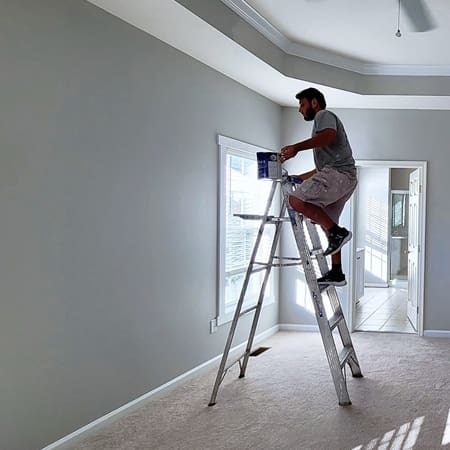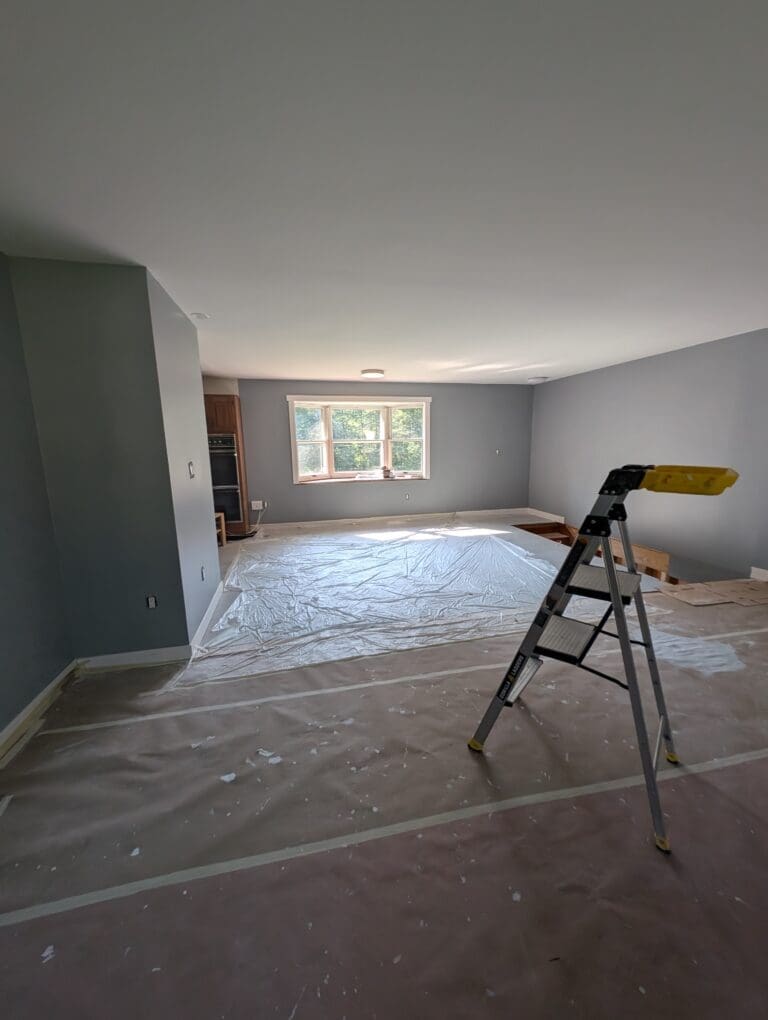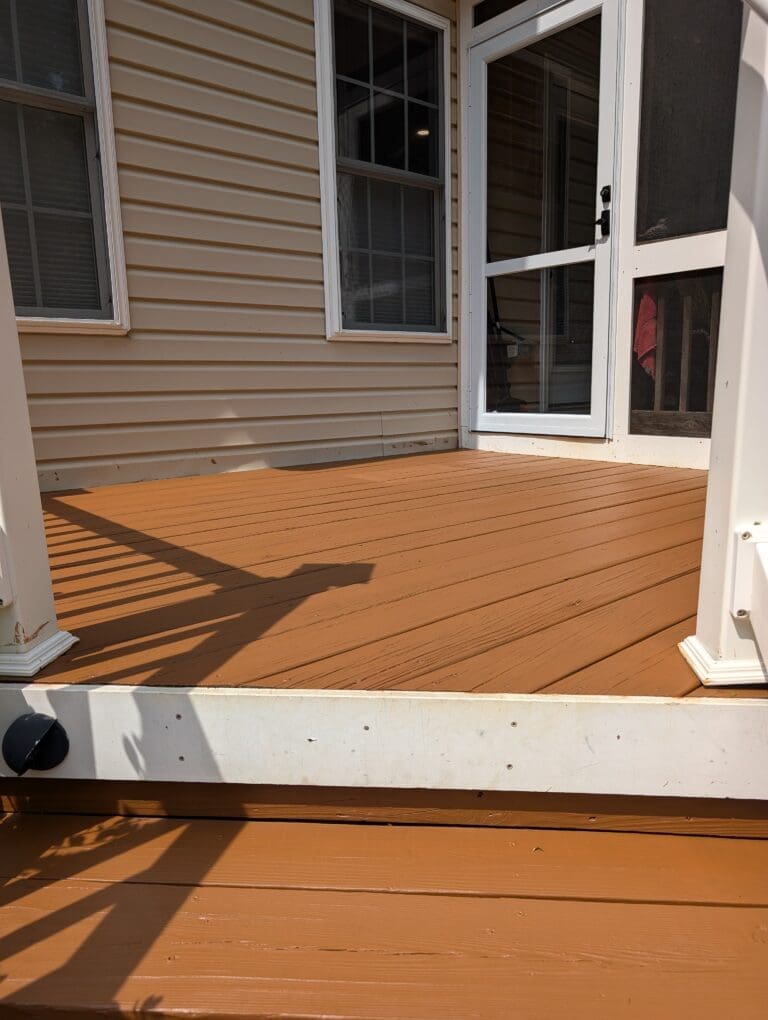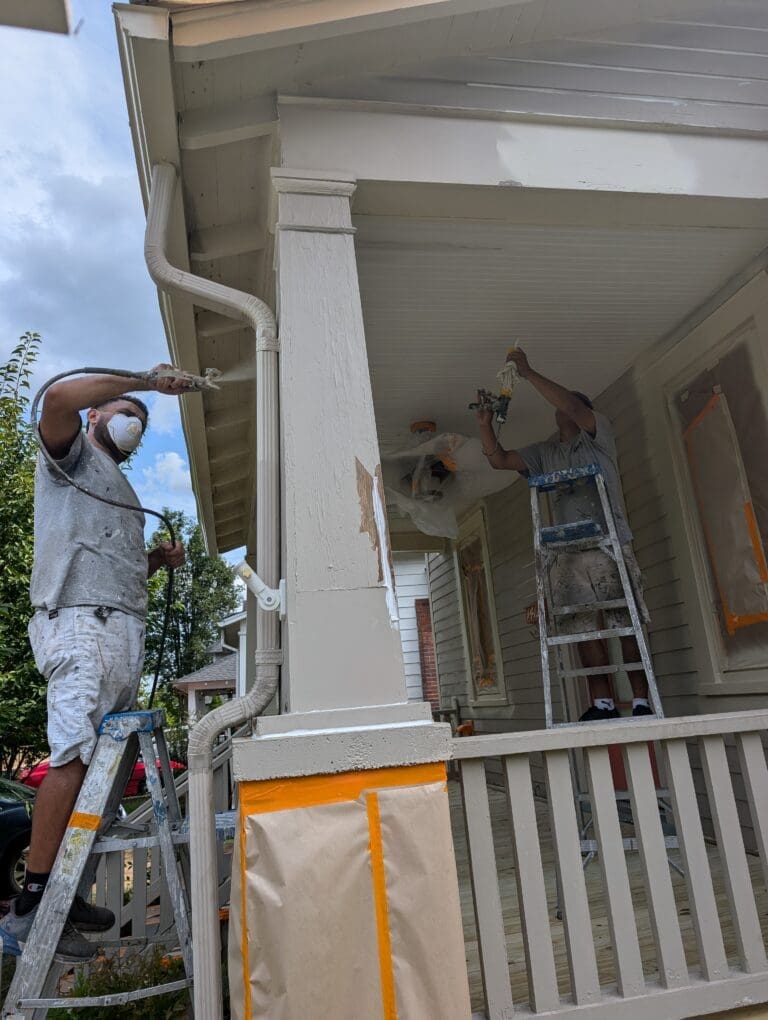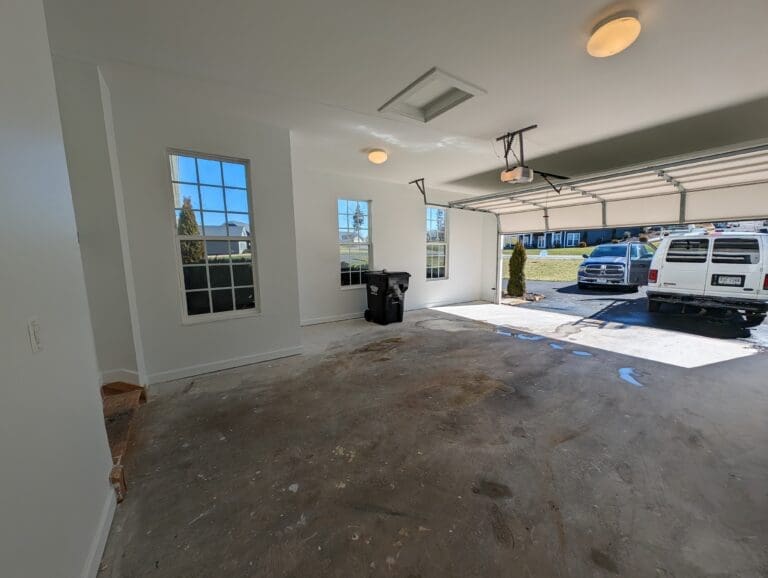Waterproof Paint: The Secret to Long-Lasting Walls & Exteriors
Water damage can be one of the most frustrating problems for homeowners and business owners. Peeling paint, mold growth, and structural issues all stem from excess moisture seeping into walls. That’s where waterproof paint comes in. It acts as a barrier, keeping surfaces protected from rain, humidity, and leaks while preserving the integrity of your home or commercial building.
Understanding how waterproof paint works, the different types available, and the best application methods can help you make the right choice for your property. Here’s everything you need to know to ensure your walls and exteriors stay in top shape for years to come.
Table of Contents
What Is Waterproof Paint?
Waterproof paint is designed to resist moisture penetration. Unlike regular paint, which can absorb water over time, waterproof formulas create a seal that repels water, preventing it from soaking into surfaces. These paints often contain acrylic, latex, or epoxy-based ingredients, along with special additives that enhance their resistance to mold, mildew, and weather-related damage.
How Does Waterproof Paint Work?
Waterproof paint forms a protective layer that prevents water from seeping through walls or exteriors. Some types are designed to block moisture entirely, while others allow trapped moisture inside the walls to escape, preventing bubbling and peeling. The effectiveness of waterproof paint depends on factors such as surface preparation, application techniques, and environmental conditions.
Benefits of Waterproof Paint for Interiors and Exteriors
Protection Against Moisture Damage
Moisture buildup leads to paint deterioration, mold growth, and structural weakening. Waterproof paint prevents these problems, ensuring that walls and exteriors stay strong and visually appealing.
Extended Lifespan of Walls and Surfaces
By blocking water infiltration, waterproof paint reduces wear and tear, meaning fewer repairs and repaints over time. This saves money while keeping surfaces looking fresh.
Mold and Mildew Resistance
Damp conditions create the perfect environment for mold and mildew to thrive. Many waterproof paints contain antifungal additives that keep these issues at bay, improving indoor air quality and preventing health hazards.
Enhanced Curb Appeal
For exterior surfaces, waterproof paint helps maintain the building’s appearance. It resists fading, chalking, and peeling caused by rain and humidity, keeping colors vibrant for years.
Energy Efficiency
Some waterproof paints have reflective properties that reduce heat absorption, helping to maintain comfortable indoor temperatures and lower energy costs.

Types of Waterproof Paint
Different waterproof paints work best for different applications. Choosing the right one depends on the surface type and exposure to moisture.
Masonry Waterproof Paint
Ideal for concrete, brick, and stucco surfaces, masonry waterproof paint contains sealants that prevent water absorption. It’s commonly used for basements, foundations, and exterior walls.
Elastomeric Paint
This thick, rubber-like coating is highly flexible and expands and contracts with temperature changes. It’s excellent for stucco and masonry walls that may develop cracks, as it helps seal small gaps and prevents water intrusion.
Epoxy Waterproof Paint
Often used in industrial and commercial settings, epoxy waterproof paint provides a highly durable, chemical-resistant surface. It’s ideal for basements, garages, and areas prone to heavy moisture exposure.
Acrylic Waterproof Paint
Acrylic-based waterproof paints are commonly used for interior walls and exteriors. They offer a balance of breathability, moisture resistance, and flexibility, making them a great choice for most residential applications.
Oil-Based Waterproof Paint
Though less common today due to environmental concerns, oil-based waterproof paint is extremely durable and often used for metal and wood surfaces exposed to high moisture levels.
Best Surfaces for Waterproof Paint
Waterproof paint can be applied to a variety of surfaces, but it works best on materials that are prone to moisture damage:
- Concrete and Brick: Prevents water absorption and cracking in foundations, basements, and exterior walls.
- Stucco and Plaster: Protects against humidity-related damage, especially in humid climates.
- Wood: Shields decks, fences, and wood siding from rain and rot.
- Metal: Prevents rust and corrosion on outdoor structures and furniture.
- Drywall: Reduces moisture damage in high-humidity rooms like bathrooms and kitchens.
How to Apply Waterproof Paint for Maximum Protection
Proper application is key to ensuring that waterproof paint performs as expected. Following the right steps can help you achieve a long-lasting and effective finish that protects your surfaces from moisture damage.
Prepare the Surface
The first step is to prepare the surface properly. Clean the area thoroughly by removing dirt, grease, and loose paint using a pressure washer or scrub brush. Repair any cracks or holes with a waterproof filler or caulk to seal gaps before painting. Let the surface dry completely, as moisture trapped under the paint can cause adhesion problems.
Skipping this step can lead to peeling and compromised protection, so taking the time to prep the surface makes a big difference in the overall durability of the waterproof paint.
Apply a Waterproof Primer
Using a high-quality primer helps the waterproof paint bond better and improves its effectiveness. Choose a primer designed for your specific surface type, whether it’s concrete, wood, or drywall. A good primer acts as a base layer that enhances adhesion and provides a smoother finish.
For maximum protection, don’t skip this step. Primer not only helps the paint stick but also prevents moisture from seeping into the surface over time.
Use the Right Painting Technique
Proper technique is essential for achieving the best results with waterproof paint. Apply at least two coats for full coverage. Use a roller or sprayer for large surfaces and a brush for corners and edges to ensure even application. Following the manufacturer’s recommendations for drying time between coats helps prevent issues like peeling or uneven coverage.
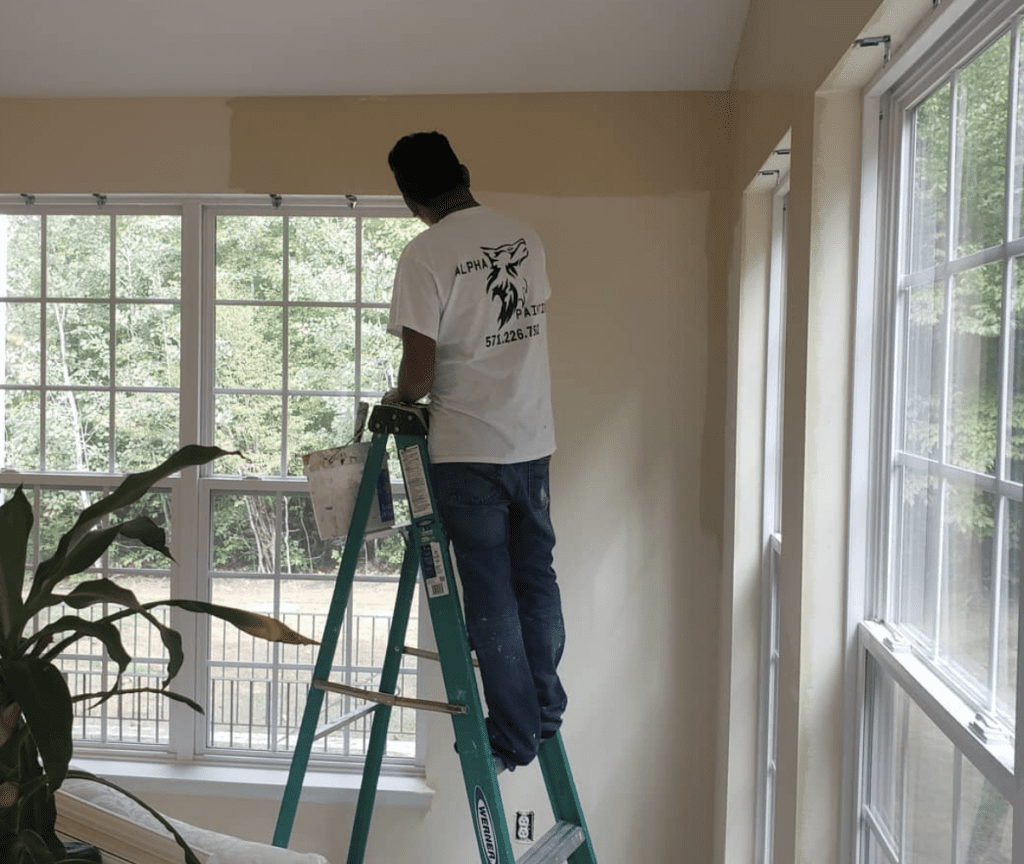
A thicker coat provides better moisture resistance, so avoid stretching the paint too thin. Proper technique ensures that the waterproof paint forms a durable barrier against water intrusion.
Ensure Proper Drying and Curing
Waterproof paint requires adequate drying and curing time to perform as expected. Most waterproof paints need at least 24 hours to dry and may take up to a week to fully cure. Avoid exposing freshly painted surfaces to water until curing is complete to prevent weakening the finish.
Rushing the drying process can compromise the paint ability to block moisture effectively, leading to potential problems down the road.
Common Mistakes to Avoid When Using Waterproof Paint
Skipping Surface Preparation
Applying waterproof paint to a dirty or damp surface leads to peeling and poor adhesion. Always clean and dry the area thoroughly before painting.
Using the Wrong Type of Paint
Not all waterproof paints are suitable for every surface. Choosing the wrong one can result in poor performance and a finish that doesn’t last.
Applying Too Thin a Coat
A thin layer of waterproof paint won’t provide full protection. Always follow the recommended coverage instructions to ensure a strong moisture barrier.
Ignoring Cracks and Holes
If gaps aren’t sealed before painting, water can still find its way in and cause damage. Proper surface prep prevents moisture from undermining the paint.
Rushing the Drying Process
Waterproof paint needs time to cure properly. Rushing the process can lead to a weak finish that doesn’t offer full protection against moisture.
How to Maintain Waterproof Paint for Long-Term Durability
Regular Cleaning
Dirt and mold buildup can affect the effectiveness of waterproof paint. Clean surfaces with mild soap and water periodically to maintain the protective barrier.
Inspect for Damage
Check walls and exteriors for cracks or peeling paint regularly. Touch up any problem areas promptly to prevent moisture from penetrating the surface.
Repaint When Necessary
Even waterproof paint wears down over time. Reapply every few years, depending on exposure to the elements, to keep the protection intact.
Keep Gutters and Downspouts Clear
Clogged gutters can lead to water damage on walls, undermining the waterproof paint. Keeping them clean prevents excess moisture buildup that can degrade the paint.
Waterproof paint is a smart investment for protecting walls and exteriors from moisture damage. It’s especially useful for damp basements, high-humidity interior rooms, or exteriors exposed to harsh weather. The right waterproof coating can extend the life of your surfaces and reduce maintenance costs.
If you’re unsure which type of waterproof paint is best for your home or commercial property, consulting a professional painter ensures you get the best results. A high-quality application today means fewer headaches down the road.


